
Issue #: 142
Published: July / August 2015
- Price per issue - digital : 5.40€Digital magazine
- Access to Multihulls World digital archives Digital archives
Anchoring in an un-crowded bay, hoisting and lowering sail, maintaining a course… ultimately it’s not that complicated! A question of preparation, experience and prudence…. Coming into harbor - especially if it’s one you don’t know - can be trickier. Here’s a few pointers to make life a little easier!
1. Before heading for the nearest harbor, have a good look at the chart - electronic or paper - and read what the pilot book has to say so as to be well aware of any danger presented by the swell or shoal areas. Be doubly vigilant at night!
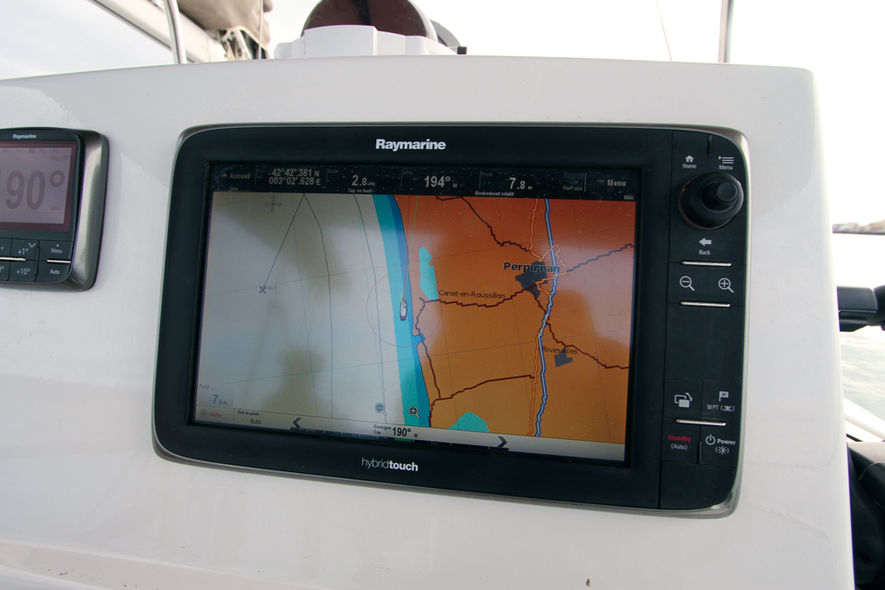
2. So you’ve chosen your destination port? First, call up the dockmaster or port captain on the VHF. The harbor staff will tell you where to dock and can give you plenty of practical information. It’s at this point, that if you’re not happy about the maneuver and/or if you’re single-handed, you should ask for a helping hand.
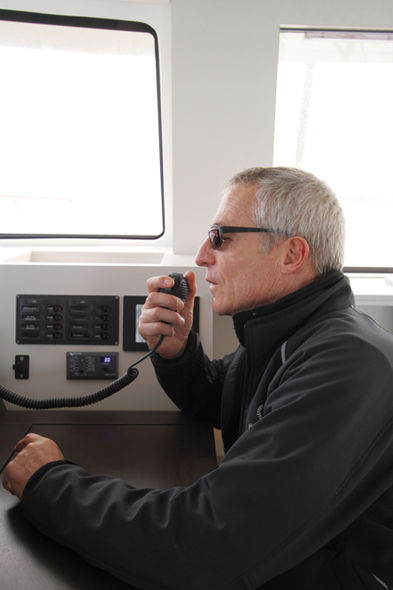
3. Start your motors, come head to wind, and roll up the genoa and lower the mainsail. If it’s rough, all this might be able to be done in the outer port, if there is one, and if it’s big enough.
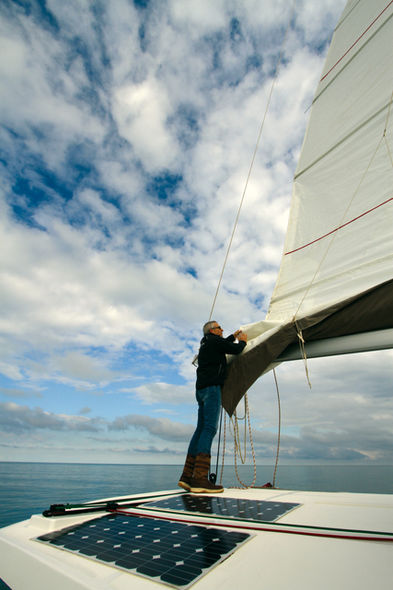
4. Get your mooring lines and springs ready, taking care to ensure you pass them under the guard wires or pulpit and pushpit. Coil them ready to throw ashore, but not so as they could end up in your prop.
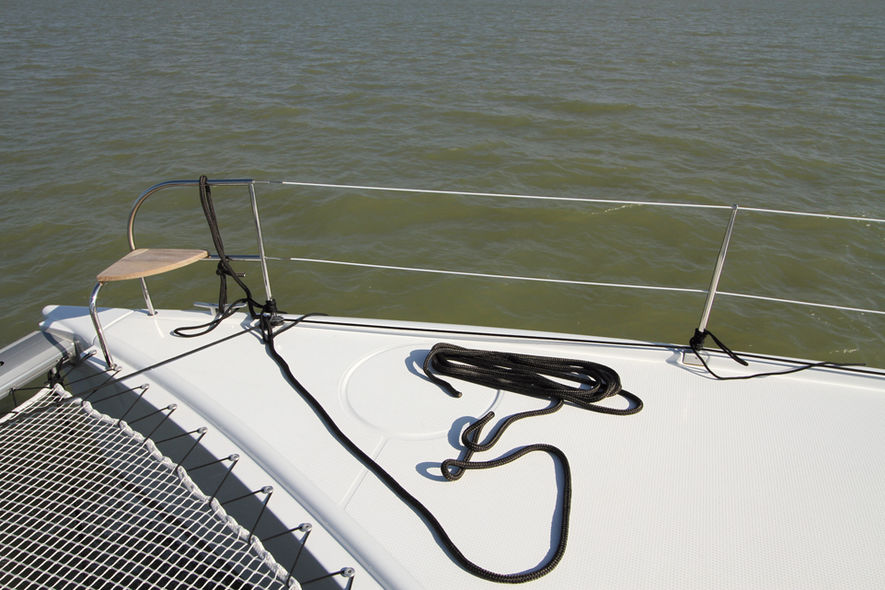
5. If you are going to be alongside the dock or next to other vessels, put fenders out, making sure not to position them over any hatches or portlights in your hulls. If you are unsure of the height of the dock, set the fenders at varying heights. And keep a spare “roving” fender to hand.
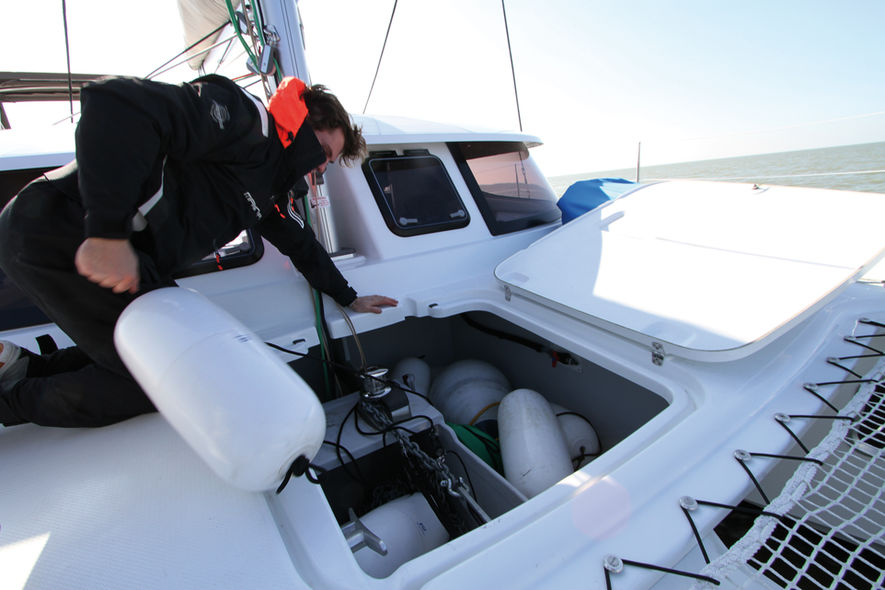
6. Sometimes you might be towing your dinghy, and it’s not always easy to hoist it up on the davits when you’re going along. If this is the case, tie it on the side of the boat which is going to be off the dock.
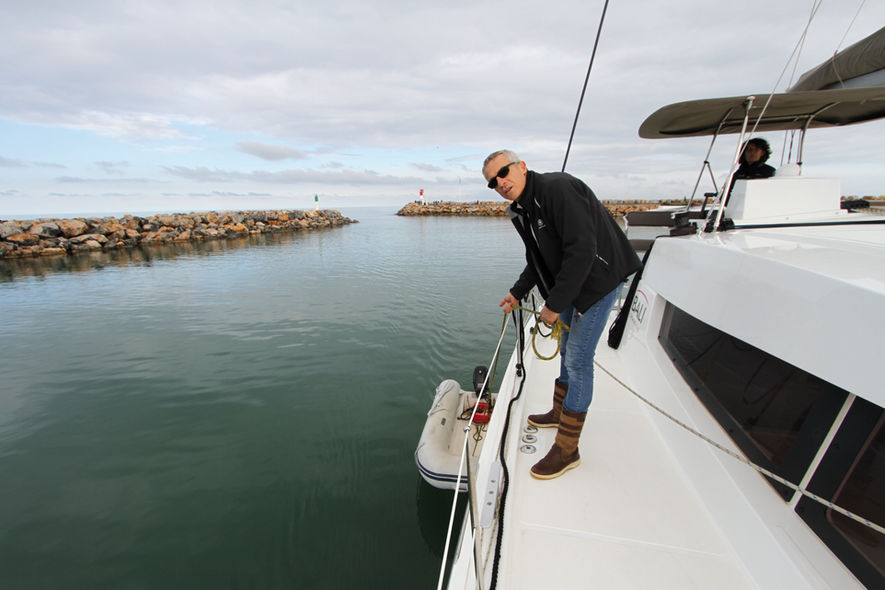
7. Respect the speed limit! It’s not just a question of conforming to the port rules and regulations, but is equally for the peace and safety of other boaters around you: if you’re trying to work in the bottom of a locker, waves are not cool!
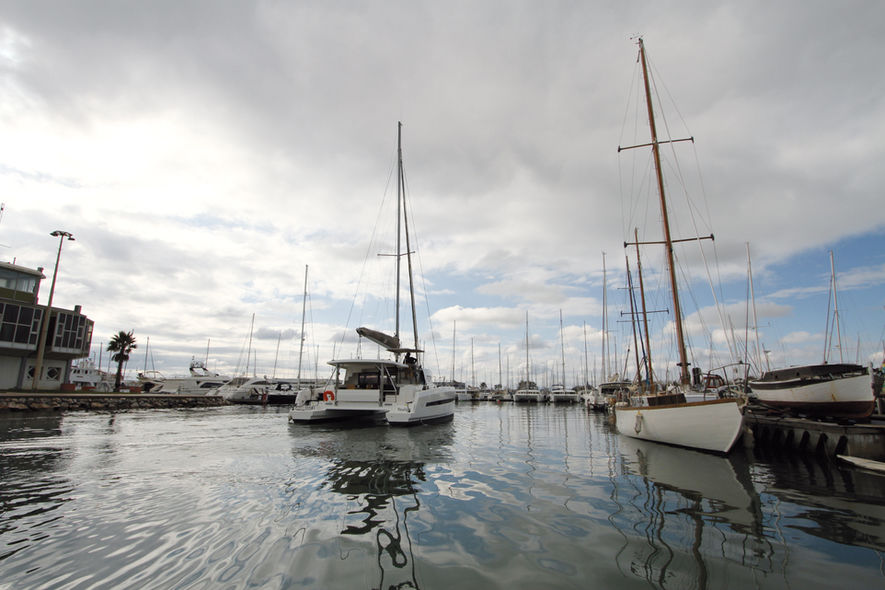
8. Maneuvering should only be effected using the motors. Fix the helm fore and aft - this is where it’s useful to have a marker on the king spoke of your wheel. To rotate the boat, simply invert your motors: your catamaran will turn on the spot.
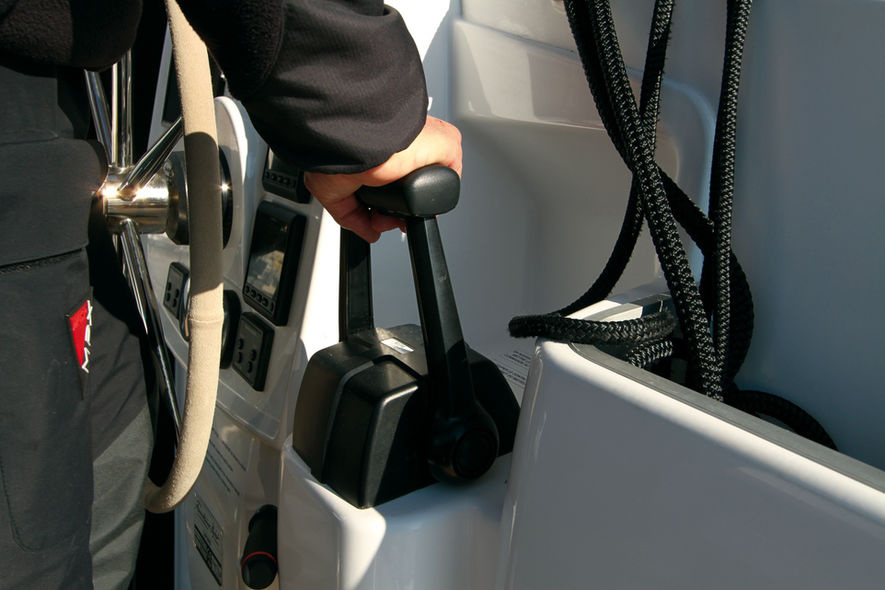
9. If you are going to tie up alongside a dock, aim to be on the side where the helmsman has the best visibility - in this case, to starboard. Bring the stern in first: it will be easier for your crew to step ashore from the aft steps.
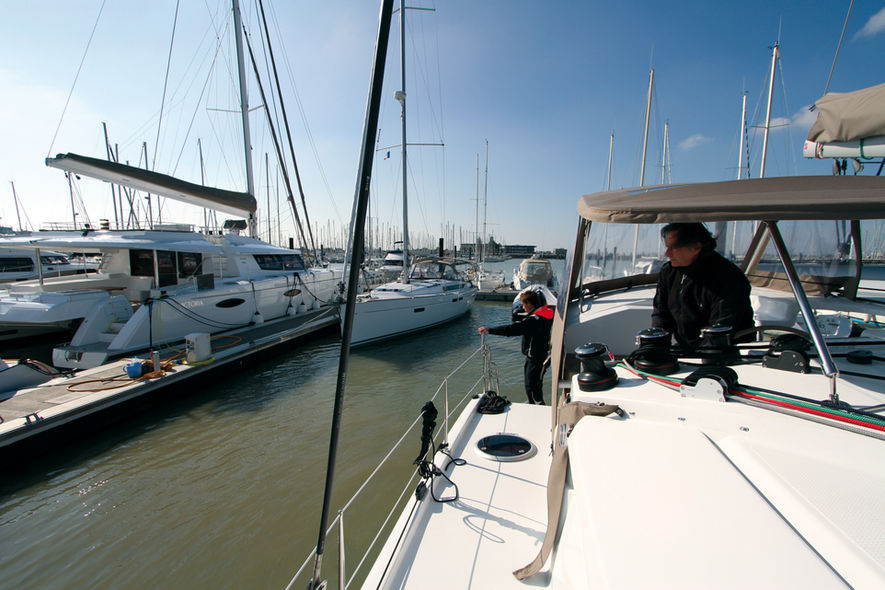
10. If you are tying up to mooring buoys, back up slowly enough that your crew can pass the mooring warps. Repeat the maneuver leaving enough slack to reach the second buoy.
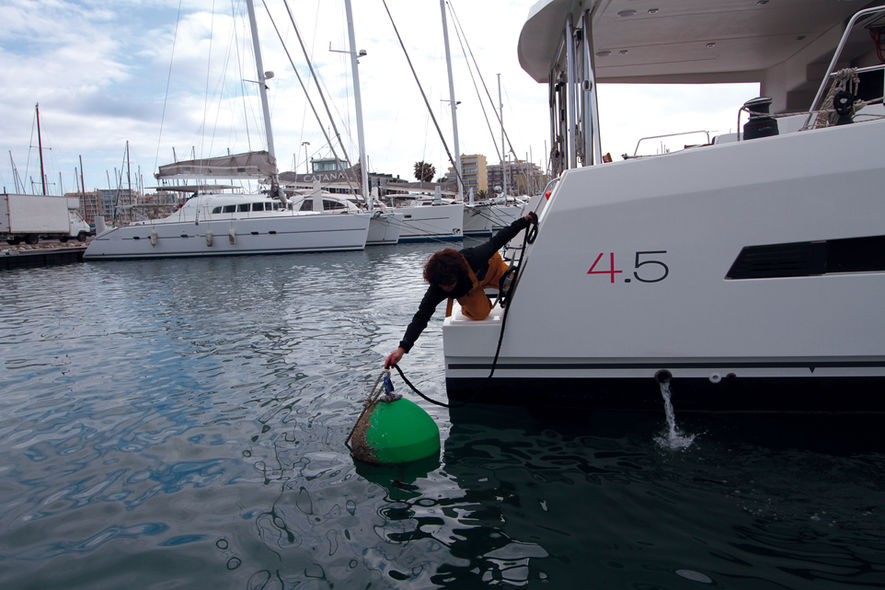
11. Once on the dock, secure your bow and stern lines, and also your spring lines, so as to prevent the boat from moving. Adjust the fenders to the correct height for the dock, and make sure the other hull is also protected in case of another vessel mooring alongside.
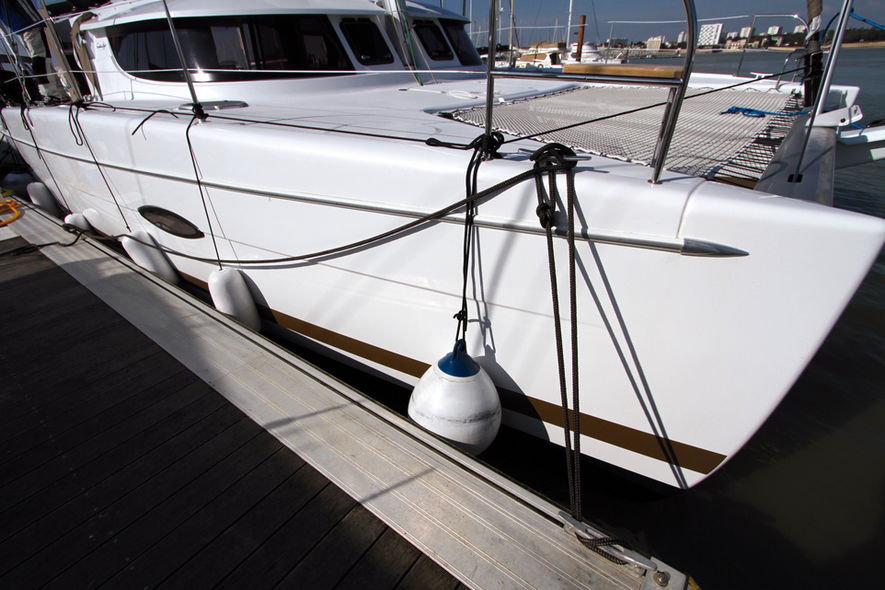
12. When stern to the dock, the aft lines are doubled up by two warps crossing over. If you are expecting high winds, the forward lines should also be double up and crossed over. Your cat is now safe: you can relax!
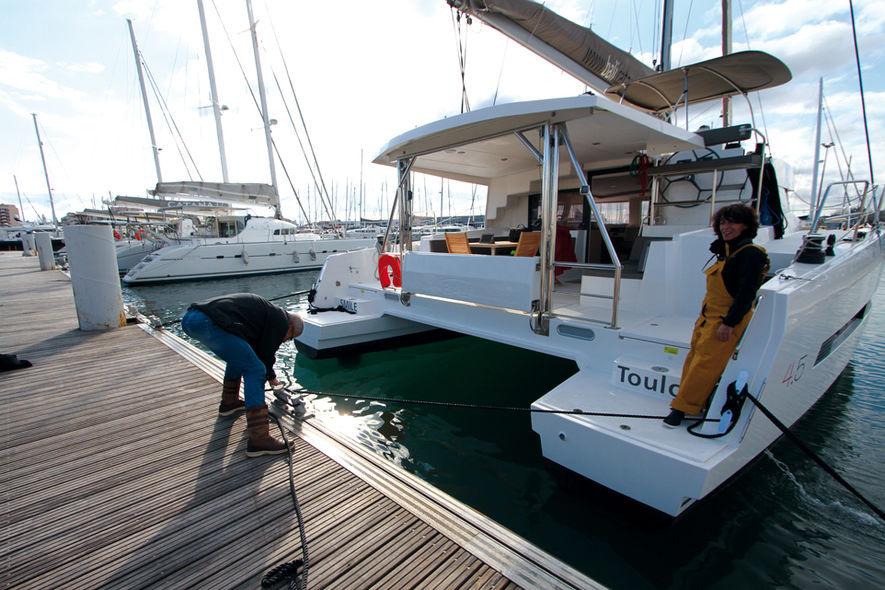
What readers think
Post a comment
No comments to show.